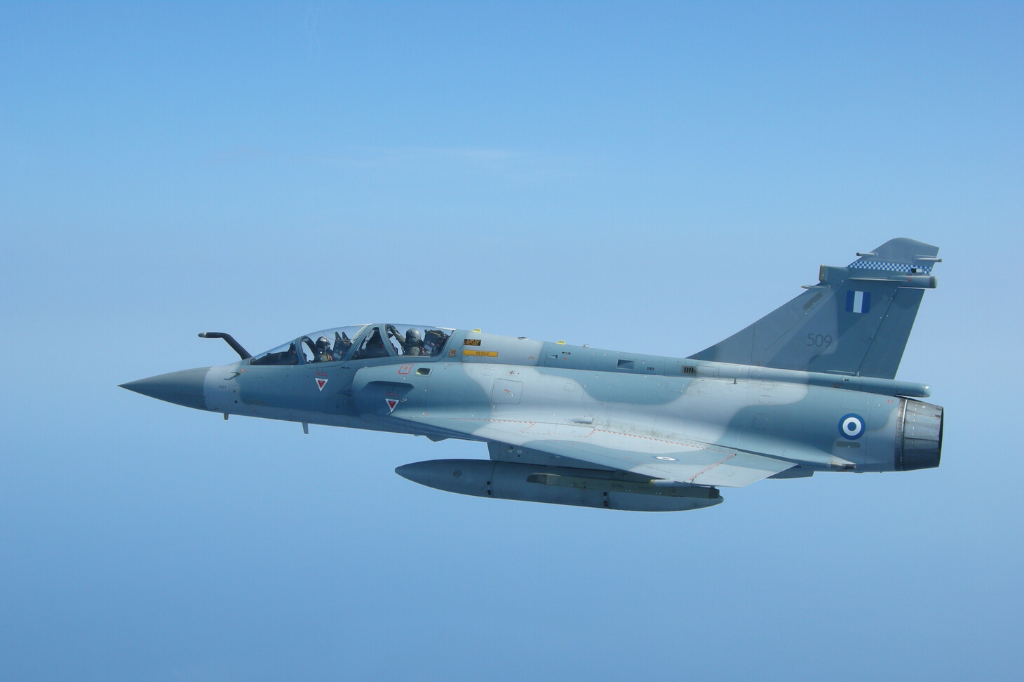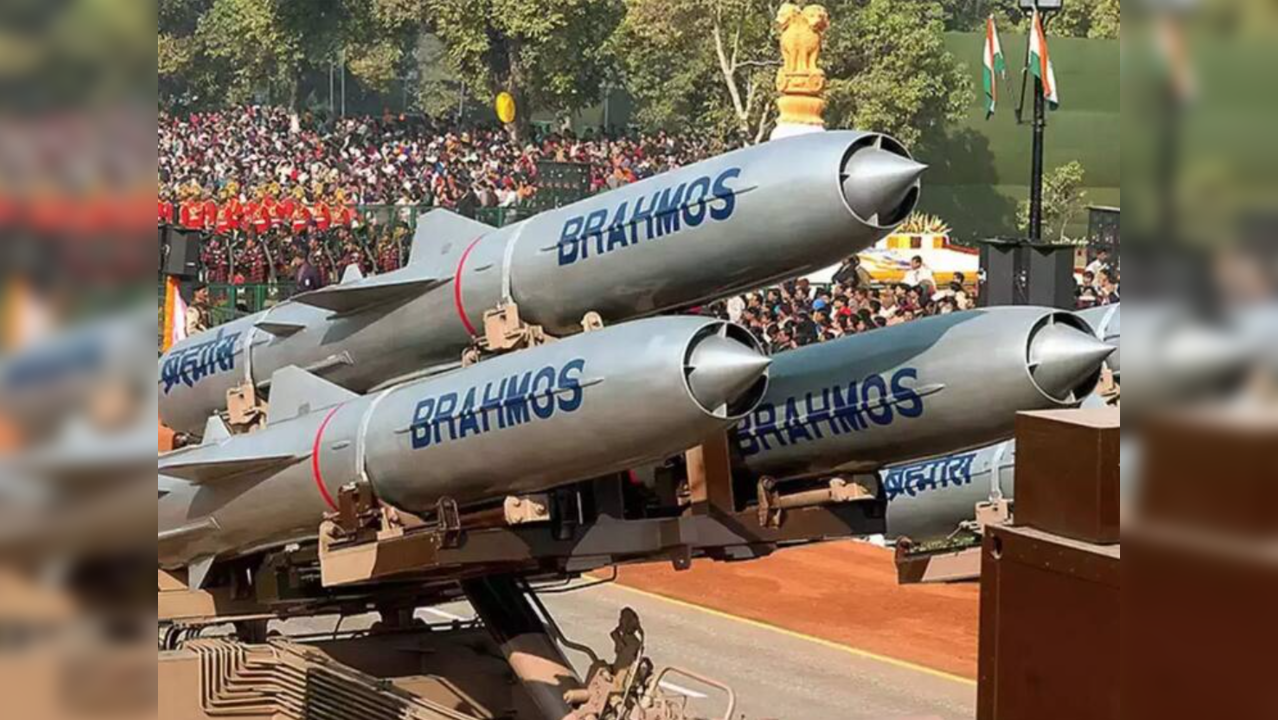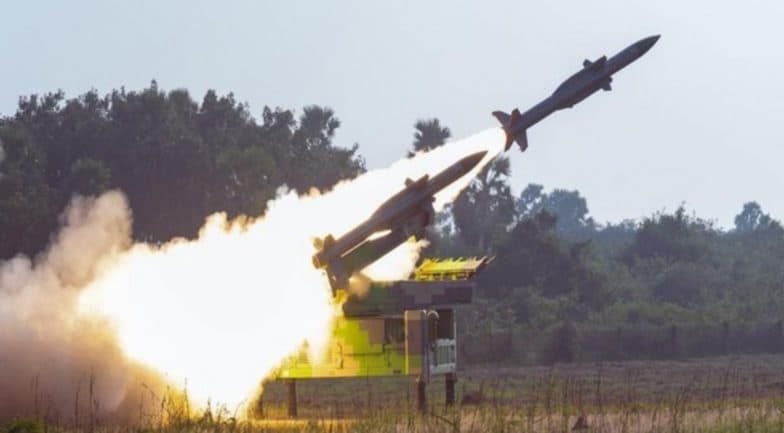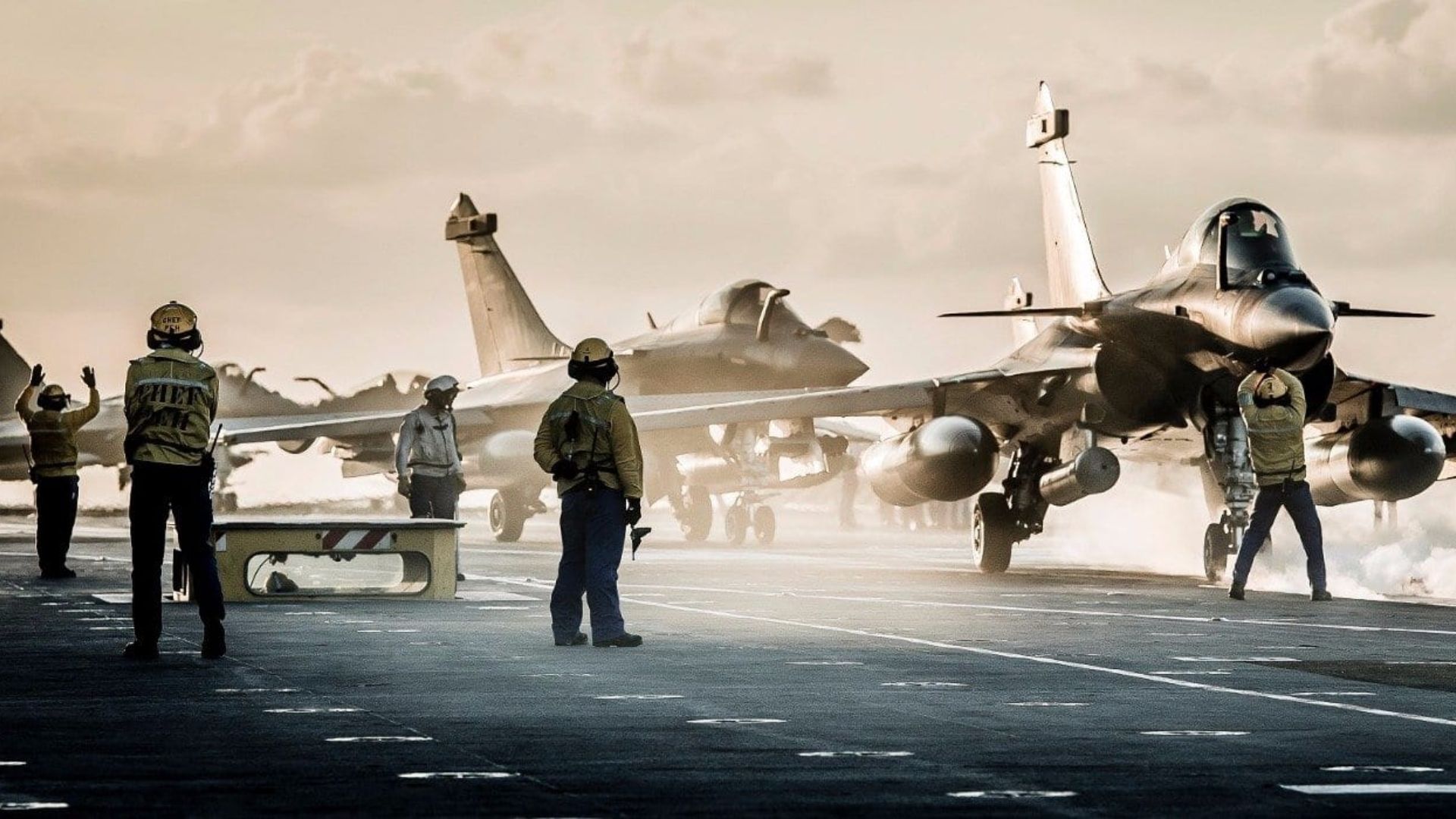AFI
SOURCE: AFI

The prospect of Ukraine bolstering its air force with additional Mirage 2000-5 fighter jets remains a topic of active discussion, with French President Emmanuel Macron indicating that these aircraft could be supplied by third countries currently operating them.
This statement comes as France has already pledged a limited number of Mirage 2000-5Fs to Ukraine, signaling a willingness to support Kyiv’s aerial defense capabilities. However, no other nation has publicly committed to transferring their Mirage 2000-5s, leaving the possibility of further deliveries uncertain.
Continue readingSOURCE: AFI

In an unexpected development, the Indian Army has decided to upgrade the engines of its T-90 tank fleet to a new 1350 horsepower (HP) variant, a move that has caught many observers off guard. This decision, confirmed in a recent Standing Committee report and bolstered by the Defence Acquisition Council’s (DAC) approval of eight capital acquisition proposals worth over Rs 54,000 crore on March 20, 2025, signals a significant enhancement in the operational capabilities of one of India’s mainstay battle tanks. However, the specifics of this upgrade—particularly the supplier and the engine’s origins—remain shrouded in ambiguity, sparking curiosity and speculation.
The T-90, a third-generation Russian main battle tank, forms the backbone of the Indian Army’s armored corps, with over 1,100 units in service, primarily the T-90S “Bhishma” variant. The Bhishma, tailored for Indian requirements, is currently powered by the V-92S2 diesel engine, delivering 1,000 HP. This engine, while reliable, has been seen as underpowered for the tank’s 48-tonne combat weight, particularly in the high-altitude regions of Ladakh and along the Line of Actual Control (LAC) with China, where agility and power-to-weight ratio are critical.
Continue readingSOURCE: AFI

The Indian Air Force (IAF) is set to enhance the survivability of its frontline airbases by procuring aircraft decoys modeled after its Rafale, Su-30 MKI, and Tejas fighters. These decoys, designed to mimic the visual and radar signatures of the real aircraft, will be deployed at forward runways to deceive enemy forces during a surprise attack, providing a critical layer of passive defense against aerial and missile strikes. The initiative reflects the IAF’s growing emphasis on safeguarding its assets amid rising regional tensions and the evolving threat of precision-guided munitions.
The plan, currently in the preliminary stages, aims to protect key bases along India’s northern and western borders, where aircraft like the Rafale, Su-30 MKI, and Tejas are stationed to counter potential aggression from China and Pakistan. By deploying realistic decoys, the IAF seeks to confuse enemy reconnaissance and targeting systems, drawing fire away from operational aircraft and infrastructure.
Continue readingSOURCE: AFI

Indian Railways is actively pursuing the establishment of small modular nuclear reactors (SMRs) to power its vast network, aiming to achieve its ambitious goal of net-zero emissions by 2030. In a significant move towards sustainable energy, the railway giant is currently engaged in negotiations with the Department of Atomic Energy (DAE) and the Ministry of Power to explore the feasibility of deploying these clean energy sources.
The primary objective is to meet the burgeoning 10 GW traction power requirement projected by 2030. By leveraging nuclear energy, Indian Railways seeks to significantly reduce its reliance on fossil fuels, thereby mitigating its environmental impact. This initiative aligns with India’s broader commitment to combating climate change and transitioning to a cleaner energy mix.
Continue readingSOURCE: AFI

In a significant boost to India’s indigenous defense manufacturing and military modernization efforts, the Standing Committee on Defence has confirmed the procurement of 156 Light Combat Helicopters (LCH) Prachand for the financial year 2025-26. The announcement, detailed in a report tabled in Parliament, underscores the government’s commitment to equipping the armed forces with advanced, homegrown platforms. Alongside this, plans are also underway to procure Light Utility Helicopters (LUH) during the same period, further strengthening the rotary-wing capabilities of the Indian Army and Air Force.
The decision to procure 156 units, slated for FY 2025-26 (April 2025 to March 2026), follows years of development and testing, during which the Prachand proved its mettle in extreme conditions, including deployments in Ladakh during the 2020 border standoff with China. The Standing Committee’s report highlights the helicopter’s strategic importance, noting its role in enhancing the Indian Army and Air Force’s ability to conduct rapid, precise strikes in contested environments.
Continue readingSOURCE: AFI

In a significant boost to India’s defense capabilities, the Defence Acquisition Council (DAC) is set to clear a monumental Rs 20,000 crore contract for the procurement of 250 BrahMos supersonic cruise missiles. This deal, aimed at enhancing the firepower of both the Indian Army (IA) and the Indian Air Force (IAF), underscores the nation’s commitment to strengthening its military deterrence and operational readiness. The supersonic missiles, jointly developed by India and Russia, are poised to elevate the strategic strike capabilities of both services, with the Army likely to receive a slightly larger share of the allocation.
The contract, valued at approximately Rs 20,000 crore, will see the acquisition of around 250 BrahMos missiles, renowned for their speed and precision. Travelling at nearly three times the speed of sound (Mach 2.8), these missiles have a current operational range of approximately 300 kilometers, though variants with extended ranges are under development. The deal reflects a balanced distribution between the Army and the Air Force, with the former expected to integrate a marginally higher number of missiles into its arsenal. This allocation aligns with the Army’s ongoing efforts to enhance its ground-based strike capabilities along critical fronts.
Continue readingSOURCE: AFI

Paras Defence & Space Technologies has secured a significant ?142.31 crore contract from the Defence Research and Development Organisation (DRDO) for the development of India’s most advanced anti-drone laser dome system. This milestone project marks the first time that such a sophisticated laser-based counter-drone technology is being developed in the country, reflecting India’s growing capability in directed energy weapons (DEW).
The contract involves the development of a Laser Source Module and its integration with a Beam Control System on a mobile platform. This system is designed to counter unmanned aerial vehicles (UAVs), drones, and even missile threats, making it a crucial component of India’s modern air defence strategy.
Continue readingSOURCE: AFI

After the export success of Spartan-S, Tonbo Imaging has launched Spartan-R, a cutting-edge clip-on or standalone thermal weapon sight that is now ATAK-enabled. Featuring an integrated Laser Range Finder (LRF), Spartan-R provides real-time ballistic calculations and a disturbed reticle for precision targeting, enhancing the capabilities of modern armed forces.
Designed for close-combat and assault rifles, Spartan-R is an ultra-lightweight, high-performance thermal imaging sight that offers multi-mission adaptability. It can function as A weapon-mounted sight (either standalone or clip-on) , A handheld pocket scope.
Continue readingSOURCE: AFI

In a significant development underscoring the growing defence ties between India and the Philippines, Philippine Army Chief General Romeo S. Brawner Jr. has expressed interest in exploring a broader range of military platforms from India. Speaking during a visit to New Delhi, Gen. Brawner highlighted the potential for procuring missile systems, fighter aircraft, and warships, in addition to the ongoing acquisition of Indian-made equipment like the BrahMos supersonic cruise missile.
The Philippines and India have steadily expanded their defence cooperation in recent years, driven by shared concerns over maritime security and regional stability in the Indo-Pacific. The cornerstone of this partnership has been the Philippines’ $375 million deal in 2022 to acquire three batteries of the BrahMos missile system, co-developed by India and Russia, for its Marine Corps’ coastal defence role. The first battery is slated for delivery by December 2025, with the Philippine Army also planning to procure two additional batteries, bringing the total to five across both services. This acquisition marks a historic milestone as the Philippines became the first export customer for the Mach 3-capable missile, which boasts a range of 290 kilometers.
Continue readingSOURCE: AFI

The Indian Navy’s impending acquisition of 26 Rafale Marine (Rafale M) fighter jets from France has sparked debate over whether it represents the country’s costliest fighter jet deal on a per-unit basis, potentially surpassing the 2016 agreement for 36 Rafale jets for the Indian Air Force (IAF). With an estimated price tag of ?60,000 crore (approximately $7.2 billion), the Rafale M deal is poised to be a landmark procurement for India’s naval aviation. But does its unit cost eclipse the earlier Rafale purchase, and what factors drive the pricing? A closer look at both deals reveals a nuanced picture.
Approved by the Defence Acquisition Council in July 2023, the Rafale M deal includes 22 single-seat jets and four twin-seat trainers, tailored for carrier operations aboard INS Vikrant and INS Vikramaditya. The package encompasses not just the aircraft but also weapons (Meteor, Exocet, and SCALP missiles), simulators, spares, crew training, and logistics support for a decade. Negotiations with Dassault Aviation and the French government, conducted under an inter-governmental agreement, are nearing completion, with signing expected by mid-2025.
Continue readingSOURCE: AFI

In a bold step into the burgeoning space technology sector, Infosys, one of India’s leading IT services giants, has emerged as a contender to build and launch a ?1,500 crore Earth Observation (EO) satellite constellation project. This ambitious initiative, spearheaded by the Indian National Space Promotion and Authorisation Centre (IN-SPACe), aims to enhance India’s space-based surveillance capabilities through a public-private partnership (PPP) model, marking a significant milestone in the country’s efforts to bolster its geospatial infrastructure and reduce reliance on foreign satellite data.
The project, valued at approximately $173 million USD, involves designing, constructing, launching, and operating a constellation of EO satellites equipped with advanced imaging technologies, including achromatic, multispectral, hyperspectral, and microwave systems. These satellites will provide high-resolution imagery and data critical for applications ranging from agriculture and disaster management to national security and environmental monitoring. Infosys is part of a consortium shortlisted by IN-SPACe, which includes six teams vying for the contract. While the full composition of Infosys’s consortium remains partially undisclosed, it is known to include GalaxEye Space—a Bengaluru-based startup focused on multi-sensor satellites—and an engineering research and development firm.
Continue readingSOURCE: AFI

On March 15, 2025, at approximately 1:30 p.m., a J-15 carrier-based aircraft of the Chinese Navy experienced a severe malfunction, resulting in a near-vertical stall and crash over Jiali, a town located in the northwestern part of Hainan Island. The incident was widely captured by onlookers, despite swift attempts by Chinese authorities to suppress the footage online.
The J-15, known as the “Flying Shark,” has long been touted as a symbol of China’s expanding blue-water naval ambitions. However, this latest crash highlighted ongoing concerns about the aircraft’s reliability and technical shortcomings. The jet plummeted less than 20 meters from residential homes, narrowly avoiding a catastrophic explosion. Fortunately, no civilians were injured, and the pilot ejected in time to survive the crash.
Continue readingSOURCE: AFI

The demographic trajectories of Pakistan and Bangladesh are sounding alarm bells for India’s security apparatus. With Pakistan’s population projected to reach 270 million by 2030 (up from 241 million in 2023) and Bangladesh’s hovering at 170 million in one of the world’s densest nations, the pressures of overpopulation, economic stagnation, and resource scarcity are mounting. For many in these neighboring countries, India—with its relatively stable economy and vast opportunities—beckons as a land of promise. This allure risks fueling a surge in illegal infiltration, straining India’s border security and social fabric. As the stakes rise, the Border Security Force (BSF) and local state governments must step up with robust plans to curb this tide and craft policies that firmly deny illegal immigrants the same rights as Indian citizens.
Pakistan and Bangladesh face stark realities. Pakistan’s population growth rate, though slowing to 1.52% annually per UN estimates, still outpaces its economic capacity, with youth unemployment at 8.5% in 2023 and 40% of its people living below the poverty line. Bangladesh, despite economic progress, grapples with a density of 1,329 people per square kilometer—over three times India’s 481—leaving little room for sustainable livelihoods amid climate pressures like flooding and rising sea levels. The 2024 political upheaval following Sheikh Hasina’s ousting has only deepened instability, displacing thousands and pushing more toward India’s porous borders.
Continue readingSOURCE: AFI

In a significant revelation, Avinash Chander, former Chief of the Defence Research and Development Organisation (DRDO), has confirmed to Bharat-Shakti Defence portal that India’s Agni-1P missile is capable of striking moving targets such as warships, including aircraft carriers.
Drawing comparisons to China’s DF-21D, often touted as the world’s first anti-ship ballistic missile (ASBM), the Agni-1P marks a major leap in India’s missile technology. With a range of 1,000 to 2,000 km and being the lightest ballistic missile (BM) in the Agni series, the Agni-1P positions India as a formidable player in maritime defense and strategic deterrence.
Continue readingSOURCE: AFI

In a significant step towards self-reliance in India’s defense and aerospace sector, DG Propulsion, a Delhi-based startup, is pushing the boundaries of indigenous manufacturing with its DG J40 compact turbojet engine.
Chirag Gupta, co-founder of DG Propulsion, recently announced the company’s ambitious plan to increase the indigenous content of the DG J40 engine from its current 30-35% to over 90% within the next few years. This initiative has received a boost from a grant provided by the Ministry of Defence (MoD), aimed at reducing reliance on foreign vendors and fostering a robust domestic supply chain for critical defense technologies.
Continue reading